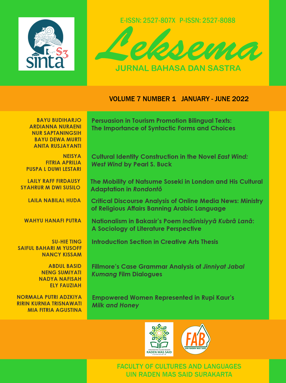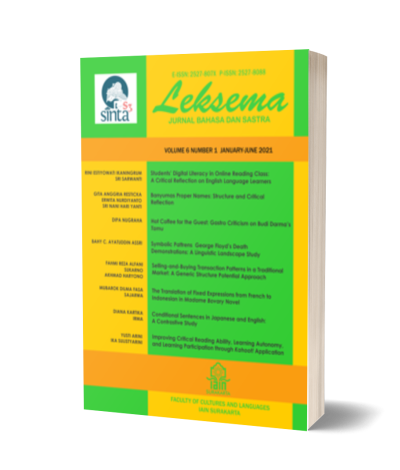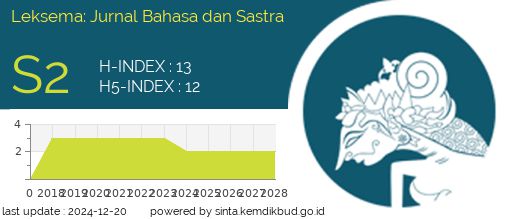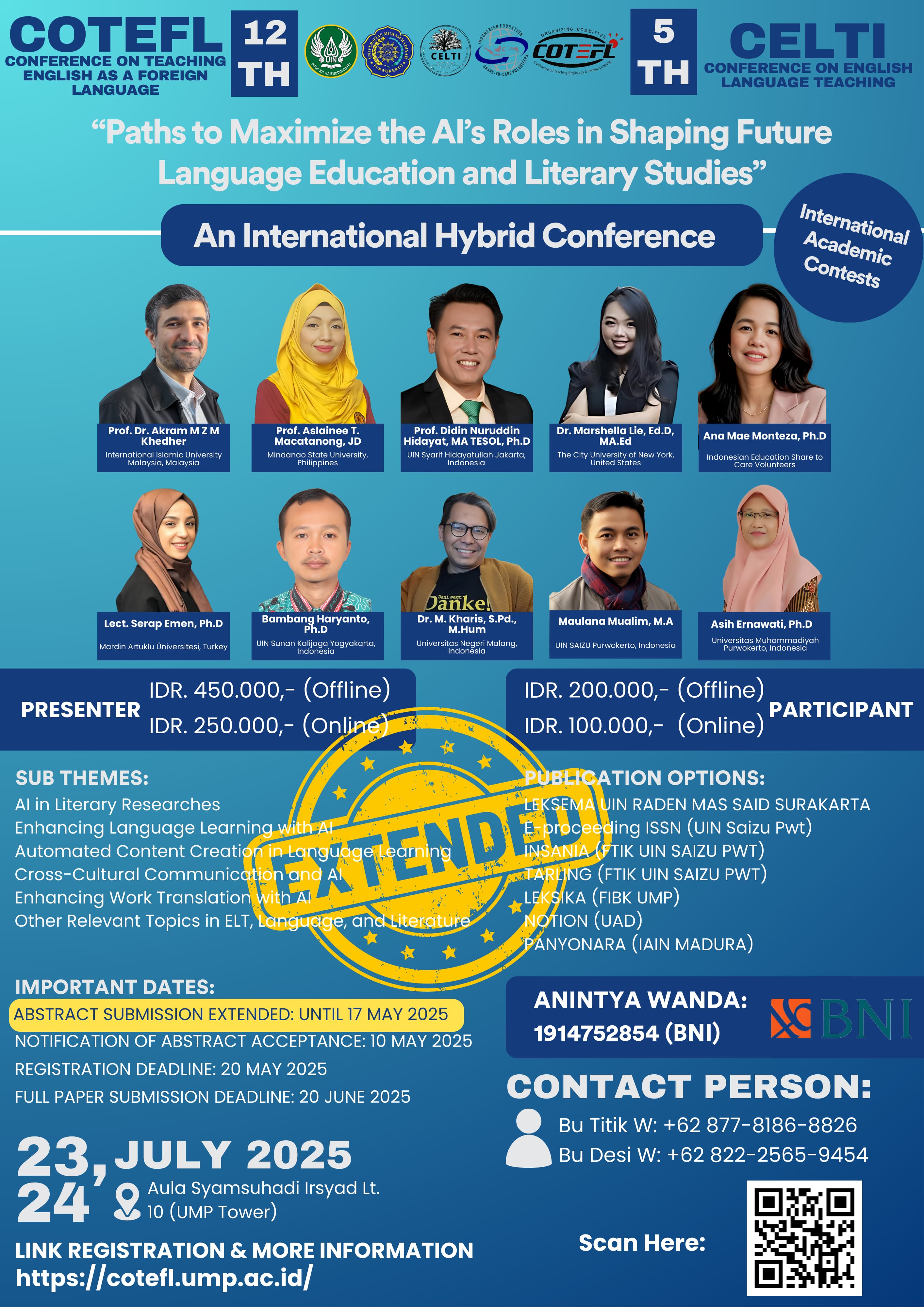THE MOBILITY OF NATSUME SOSEKI TO LONDON AND HIS CULTURAL ADAPTATION IN 'RONDONTŌ'
DOI:
https://doi.org/10.22515/ljbs.v7i1.4837Keywords:
Japanese literature, Natsume Soseki, Japanese mobility, cultural adaptationAbstract
The mobility from East to West in nowadays perspective might be very different from that of the old days. This paper discusses the mobility of Natsume Soseki from Japan to London in the early 1900s and the cultural adaptation he does there. This research applied descriptive analysis method and the cultural adaptation theory with a novel entitled Rondontō as the material object. Some studies related to this were use as both references and supporting instruments. The findings showed that the mobility of Soseki to London is indeed affects many things in his life. However, from the cultural adaptation perspective, it appears that Soseki does not adapt well to his new society in the city. Though he accepts his new environment and also communicate well with the host or Londoners, but the acceptance of the host and the pressure to adapt have led him to uncomfortable situation. These factors affect the functional fitness where he is not expecting much from the new environment as well as his psychological health where he feels like not belonging to the place. Despite the uncomfortable situation, the mobility gives him an important experience and affects much to him, especially his works and life as a scholar of English literature.
Downloads
References
Baubock, Rainer and Thomas Faist (eds). 2010. Diaspora and Transnationalism: Concept, Theories and Method. Amsterdam: Amsterdam University Press
Fatimah, Fatma Silviana. 2019. Pengalaman Culture Shock yang Dialami Karakter Utama dalam Novel Rondontou Karya Natsume Soseki (Skripsi). Surabaya: Universitas Airlangga
Firdausy, Laily Raff. 2020. Hubungan Natsume Soseki dan Shakespeare: Kajian Terhadap Cerpen Rondontō. (Skripsi). Surabaya: Universitas Airlangga.
Gudykunst, William B & Young Yun Kim. 2003. Communicating with Stranger (4th Edition). Boston: Mc-Graw Hill
Hisae, Niki. 2001. Soseki’s Study Abroad and Hamlet. Tokyo: Liber Press
Homma, Kenshiro. 2003. “Natsume Soseki and His Study Of English Literature”. Doshisha Studies in Language and Culture. 5(4): 569-593
Kim, Young Yun. 2001. Becoming Intercultural: An Integrative Communication Theory and Cross-Cultural Adaptation. Thousand Oaks: Sage Publication
Lee, Erika. 2015. The Making of Asian America: A History. New York: Simon & Schuster
Nakahara, Akio. 2013. “Rondonto Kaitai (Dismantling Rondonto)”. The Journal of Cultural Science 1: 765-760
Pichler, Andreas. 2013. “Braving the London Fog: Natsume Soseki’s The Tower of London.” The IAFOR Journal of Literature and Librarianship 2 (1): 57-64
Ratna, Nyoman Kutha. 2004. Teori, Metode, dan Teknik Penelitian Sastra dari Strukturalisme Hingga Poststrukturalisme Perspektif Wacana Naratif. Yogyakarta: Pustaka Pelajar
Said, Edward W. 1994. “Orientalism”. New York: Vintage Books
Soseki, Natsume. 1905. 倫敦塔・幻影の盾. Tokyo: Shinchosha Publishing
Soseki, Natsume. 1997. The Tower Of London: Tales of Victorian London. London: Peter Owen
Vegas, Carolina Leon. 2021. “Migrants and Other Others in 2020 by Javier Moreno”. Stockholm Studies in Culture and Aesthetics: Narratives Crossing Borders The Dynamics of Cultural Interaction: 51-74.
Zhou, Min. 2012. “Asians in America: The Paradox of The Model Minority and The Perpetual Foreigner’”. 43rd Annual Sorokin Lecture (Delivered February 9, 2012, at the University of Saskatchewan, Canada)
Zhou, Min. 2016. Contemporary Asian America: A Multidisciplinary Reader (Third edition). New York: NYU Press
Downloads
Published
Issue
Section
License
Copyright (c) 2022 Leksema: Jurnal Bahasa dan Sastra

This work is licensed under a Creative Commons Attribution-NonCommercial-ShareAlike 4.0 International License.
The copyright of the received article shall be assigned to the publisher of the journal. The intended copyright includes the right to publish the article in various forms (including reprints). The journal maintains the publishing rights to published articles.
In line with the license, the authors and users (readers or other researchers) are allowed to share and adapt the material only for non-commercial purposes. In addition, the material must be given appropriate credit, provided with a link to the license, and indicated if changes were made. If authors remix, transform or build upon the material, authors must distribute their contributions under the same license as the original.







